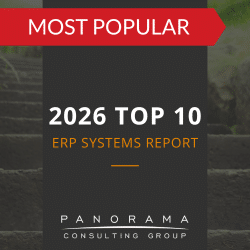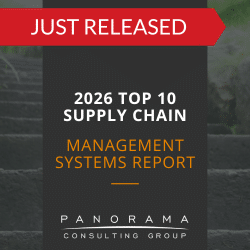An ERP system has the potential to transform your business for the better. At the same time, it can also stir up worries and anxieties within your workforce.
Adopting new tools, features, and methodologies can be jarring for employees, and you may encounter varying degrees of resistance.
While some pushback is to be expected, what if you could quell a large portion of those fears and motivate your team members to stay the course? With a resistance management plan, you can do just that.
Today, we’re sharing how to build such a plan so you can frame the change in a way that encourages user adoption and puts anxieties to rest.
ERP Training Plan Success Story
We helped this manufacturer implement an ERP training strategy to increase user adoption of its new ERP system.
How to Build a Resistance Management Plan
Step 1: Understand the Root Causes of Resistance
Many organizations assume that employees are resisting the change just because they’re unwilling to learn the new workflows. Originations may brush aside employee concerns and say it’s just business, expecting them to eventually get on board.
However, by doing so, these organizations may never understand the reasons employees are resisting the new ERP software. These may include:
- Worries about how the change will impact their workflows
- Concerns over project team credibility
- Issues with how the change aligns with their value system
- Personal factors (e.g. family, status, health)
- Your organization’s track record of handling change
Before you can devise a plan to mitigate user resistance, you need to understand the common causes. This should occur before you even introduce a project.
We recommend thinking about why your employees may resist the upcoming change. What issues are at play, and what motivations lie behind them? If you can anticipate resistance ahead of time, you can address and eliminate it before it takes hold and spreads.
Step 2: Develop a Resistance Response Plan
Sometimes, user resistance will persist despite your best efforts. This is why it’s essential to develop an organizational change management plan that includes a resistance management strategy.
Let’s look at a few ways you can address change resistance within your organization.
Assign Leaders to Spearhead Change
Often, resistance is rooted in misunderstanding. Employees may be suspicious about the intent behind a change and wonder if it will negatively affect their role in the company.
By explaining what’s going on and what to expect, project leaders can eliminate most of these misunderstandings. Early in your project, you should assign leaders who can serve as spokespeople for the ERP implementation. This should include a mix of department heads and C-suite executives.
These spokespeople should be able to speak clearly and confidently about the steps involved in the project, as well as the benefits it will deliver.
When speaking about these benefits, they should be able to frame them in a way that each employee can understand and appreciate. This means customizing their message to appeal to each end-user’s unique perspective.

Keep Communication Open and Frequent
When frustrations aren’t let out in the open, they tend to brew. As they brew, they grow.
Therefore, make sure your employees know exactly how they can communicate with the project team throughout the project. There should be clear feedback channels and frequent discussions to answer questions, dispel rumors, and explain next steps.
Along the way, be sure to vary the nature of your change management communication. While email will work for some communication, it doesn’t work for all types of messages. From town hall meetings to focus groups and one-on-one discussions, there is a variety of ways to encourage employees to speak up and share.
Understand Naysayers
There will always be naysayers at the beginning of a project, so it’s important to take the time to hear them out. Speak openly and honestly with them and allow them to share their thoughts about everything that’s happening. You may find that their points are valid and worth considering.
They’ll appreciate the opportunity to share their insights, and these discussions alone could be enough to help them move past their resistance.
Step 3: Analyze and Sustain Outcomes
Once your ERP change management plan is in place and you’re doing all you can to manage resistance, it’s important to assess the effectiveness of your efforts.
Are the activities you put in place working? If not, what do you need to do differently?
You can learn what’s working and what isn’t by measuring user adoption rates, talking directly with employees, issuing surveys, or using a variety of other mechanisms.
Adoption rates alone won’t tell the full story because you could have employees who are actively using the new software but not utilizing all its features.
Ultimately, you need to know how your employees feel about the measures you put in place, and then document your lessons learned so you can use those insights to augment your plan.
Keep Morale High, Employees Happy, and Your Project On Track
While an ERP software implementation may not be universally embraced as soon as you announce it, there are strategies you can employ to make the idea more palatable. By creating a resistance management plan, you can identify employees who may be especially hesitant to abandon their old workflows and develop messaging to directly address their needs.
Contact our change management consultants below to learn more and request a free consultation.













